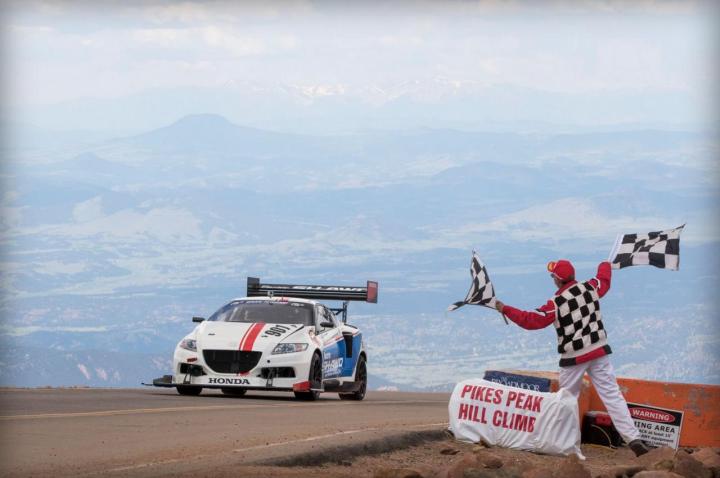
With the brand’s recent return to Formula One and the debuts of the Acura NSX and 2016 Civic Type R looming, it’s clear that we’re in the midst of a performance renaissance for Honda. Want more proof? The next-generation CR-Z is rumored to ditch the hybrid getup altogether in favor of a turbocharged engine and full sport makeover.
In attempt to showcase this new attitude, Honda traveled to Colorado for The Pikes Peak International Hill Climb with some slick rides in tow. The NSX pace car was undoubtedly a highlight, but the all-electric, all-wheel drive, and all-wheel steering version of the CR-Z that ran in the Exhibition Class was our favorite. Better yet, with SuperGT racer Tetsuya Yamano behind the wheel, the silent two-seater actually won with a time of 10:23.829.

Yamano’s victory wasn’t the only cause for celebration at the Honda booth; the automaker’s two-wheeled representatives fared quite well themselves. Piloting the wicked CBR1000RR motorcycle, Honda rider Jeff Tigert left his competition in the dust with a time of 10:02.735, winning the Heavyweight motorcycle class. A few cubic inches down the ladder, Nick Robinson clawed his way to the summit in his Honda CRF250R to win the 250cc motorcycle class with a time of 12:37.000.
“Pike’s Peak provides a unique opportunity to show the versatility and sportiness of our products – both Honda and Acura,” said Art St. Cyr, President of Honda Performance Development. “Congratulations to our associates who all made fast and safe runs up a very challenging course, and earned three class victories, including the fastest overall motorcycle run. It also was exciting to see the new NSX supercar on track as the pace car.”
Editors' Recommendations
- EV glossary: All of the electric vehicle jargon you need to know
- Honda Clarity Electric gets unplugged, won’t return for new model year
- The Honda CR-V Hybrid is more important than you think
- The Honda infotainment system: Everything you need to know
- The Honda Passport: A more hardcore off-roader than you think


